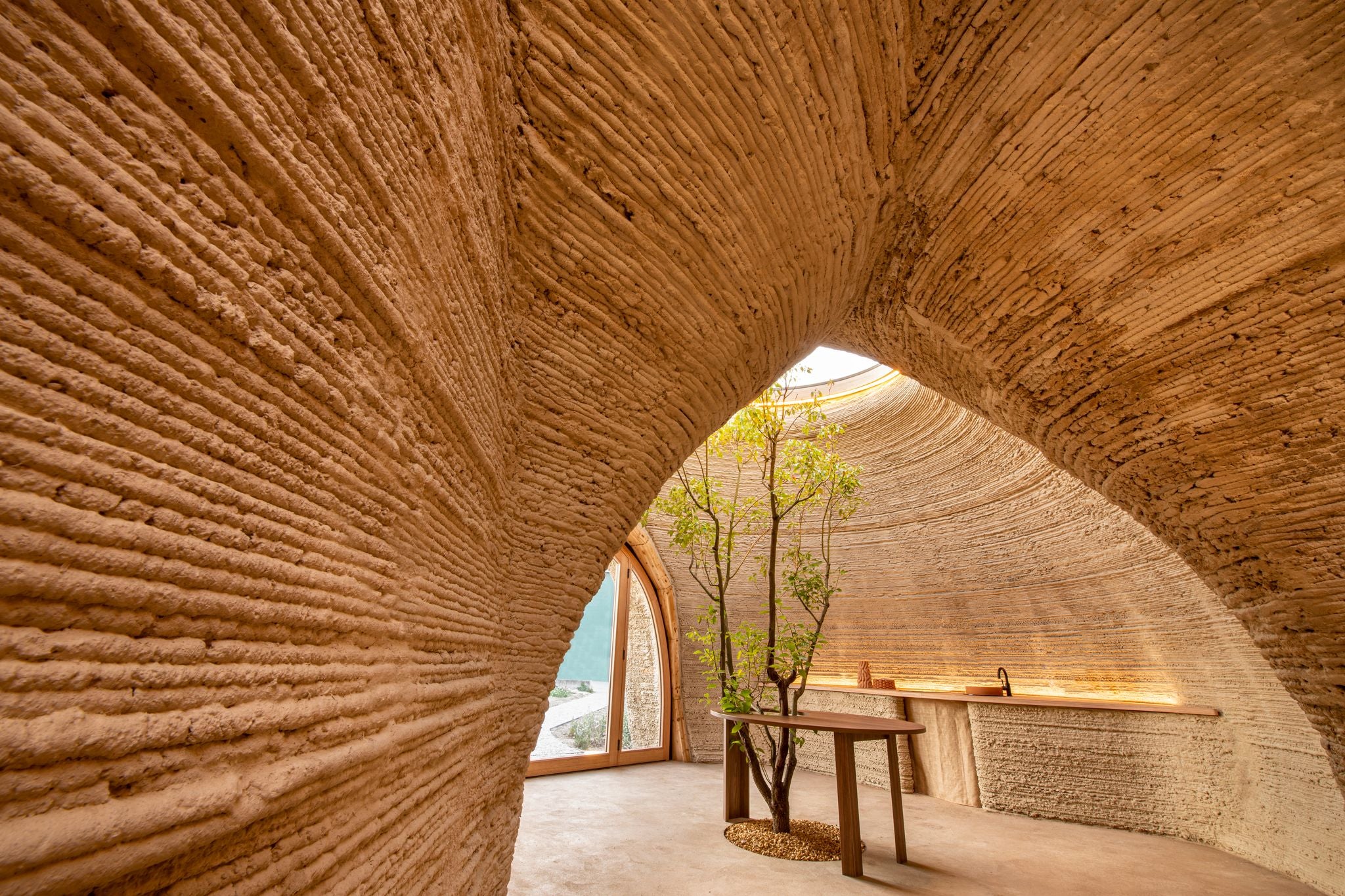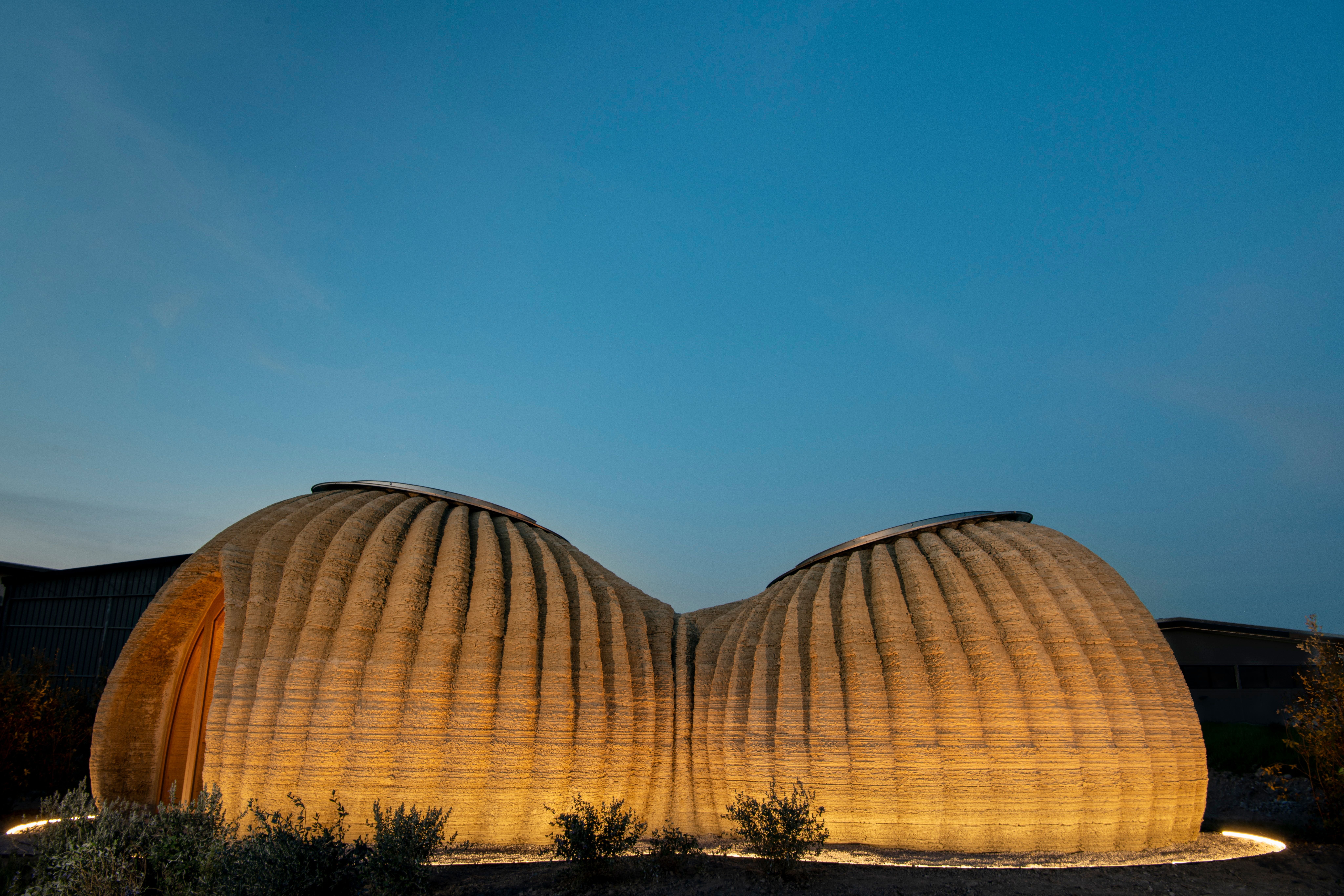
The world’s first 3D-printed house made entirely of earth has been built in Italy.
The achievement is called ‘Tecla’, and was made through a collaboration between World’s Advanced Saving Project (WASP) and architect Mario Cucinella.
Inspired by Italo Calvino’s ‘invisible cities’ – a city in continuous construction – the building is comprised of two circular, linked domes using local materials, and is close to zero-emissions; soil from the area was used for to make its 350-layer walls, and its curved shell is completely biodegradable.

It covers approximately 60 square meters, little over four meters high, and is comprised of a living room, a kitchen, and a “night zone” with a bathroom.
All this can be made with 200 hours of printing, 7000 machine codes, and only 60 cubic meters of natural materials - achieved because the building requires no other structure to keep it upright, and is able to hold its own weight. Clay also acts as a thermal barrier, insulating the building.
The physical construction was a world-first as well, where two huge, synchronised arms from a 3D-printer built the modules simultaneously.
“From the shapeless earth to the earth as house shaped. Today we have the knowledge to build with no impact in a simple click”, Massimo Moretti, WASP Founder, said in a statement. “Technology is now at the human service and the home as a birthright is real.”
There are some drawbacks in comparison to traditional construction: printing with clay is slower than concrete, can take weeks to dry, and is not sustainable for high buildings, CNN points out. However, these concerns seem less important when there are 1.6 billion people who currently lack adequate housing.

In order to address that challenge, future iterations of this house would be made of different material depending on where it is built. "We are not producing one type of house that you can print and do it everywhere ... Because, of course, it’s different if you design a house in the north of Italy, or ... in the middle of Africa, or in South America," Cucinella said. "We adapt the house to different climates."
"I don’t think we are in the position to say this will be the future of all houses on the planet," he added, as countries like China would not be able to solve overpopulation in their cities with clay housings, but “the revolution of 3D printing is to give people a degree of freedom in how to do things, without being connected to a big, professional industry."







